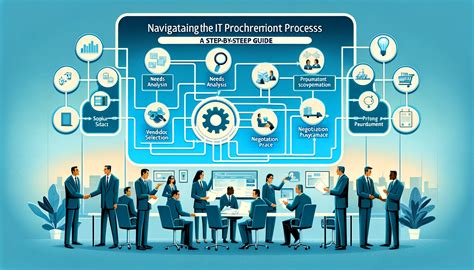In today's fast-paced digital landscape, businesses are constantly looking for ways to streamline their operations, improve efficiency, and increase productivity. One effective way to achieve this is by implementing tech simplification solutions. By simplifying complex technological systems and processes, businesses can reduce costs, enhance customer experience, and gain a competitive edge in the market.
Tech simplification solutions involve breaking down intricate systems into manageable components, eliminating unnecessary complexity, and leveraging technology to automate and optimize business processes. This approach enables businesses to focus on their core competencies, rather than getting bogged down in technical complexities. In this article, we will explore the benefits, working mechanisms, and implementation strategies of tech simplification solutions, and provide practical examples to illustrate their impact.

Benefits of Tech Simplification Solutions
Tech simplification solutions offer numerous benefits to businesses, including:
Reduced Complexity
By simplifying complex systems and processes, businesses can reduce the time and resources spent on maintenance, troubleshooting, and updates. This, in turn, leads to cost savings and improved efficiency.
Improved Productivity
Tech simplification solutions automate and optimize business processes, freeing up staff to focus on high-value tasks that drive revenue and growth.
Enhanced Customer Experience
Simplified systems and processes enable businesses to respond more quickly to customer needs, leading to improved customer satisfaction and loyalty.
Increased Agility
Tech simplification solutions enable businesses to adapt more quickly to changing market conditions, customer needs, and technological advancements.
Working Mechanisms of Tech Simplification Solutions
Tech simplification solutions involve a range of strategies and techniques, including:
Process Automation
Automating repetitive and mundane tasks using software robots, artificial intelligence, and machine learning algorithms.
System Integration
Integrating disparate systems and applications to create a seamless and efficient workflow.
Cloud Migration
Migrating applications and data to the cloud to reduce infrastructure costs and improve scalability.
Digital Transformation
Transforming business models, products, and services to take advantage of digital technologies and innovations.
Implementation Strategies for Tech Simplification Solutions
Implementing tech simplification solutions requires a structured approach, including:
Assessing Business Needs
Conducting a thorough analysis of business processes, systems, and technologies to identify areas for simplification.
Defining Simplification Goals
Establishing clear objectives and key performance indicators (KPIs) for simplification initiatives.
Designing Simplification Solutions
Developing tailored solutions that address specific business needs and goals.
Implementing and Testing Solutions
Rolling out solutions and testing them to ensure they meet business requirements and expectations.
Monitoring and Refining Solutions
Continuously monitoring and refining solutions to ensure they remain effective and efficient.
Practical Examples of Tech Simplification Solutions
Example 1: Automating Customer Service
A retail company implemented a chatbot solution to automate customer service inquiries, reducing response times by 90% and increasing customer satisfaction by 25%.
Example 2: Integrating Supply Chain Systems
A manufacturing company integrated its supply chain systems, reducing inventory costs by 30% and improving delivery times by 40%.
Example 3: Migrating to the Cloud
A software company migrated its applications to the cloud, reducing infrastructure costs by 50% and improving scalability by 300%.
Best Practices for Tech Simplification Solutions
To ensure successful implementation of tech simplification solutions, businesses should follow these best practices:
Establish Clear Goals and Objectives
Define clear objectives and KPIs for simplification initiatives to ensure everyone is aligned and working towards the same goals.
Engage Stakeholders
Involve stakeholders from across the organization to ensure that simplification solutions meet business needs and requirements.
Monitor and Refine Solutions
Continuously monitor and refine solutions to ensure they remain effective and efficient.
Provide Training and Support
Provide training and support to staff to ensure they can effectively use and maintain simplified systems and processes.

Gallery of Tech Simplification Solutions






FAQ Section
What is tech simplification?
+Tech simplification is the process of breaking down complex technological systems and processes into manageable components, eliminating unnecessary complexity, and leveraging technology to automate and optimize business operations.
What are the benefits of tech simplification?
+The benefits of tech simplification include reduced complexity, improved productivity, enhanced customer experience, and increased agility.
How do I implement tech simplification solutions?
+To implement tech simplification solutions, you should assess your business needs, define simplification goals, design tailored solutions, implement and test solutions, and continuously monitor and refine solutions.
We hope this article has provided you with a comprehensive understanding of tech simplification solutions and how they can benefit your business. By streamlining complex systems and processes, you can reduce costs, improve efficiency, and enhance customer experience. Remember to follow best practices, engage stakeholders, and continuously monitor and refine solutions to ensure successful implementation.
